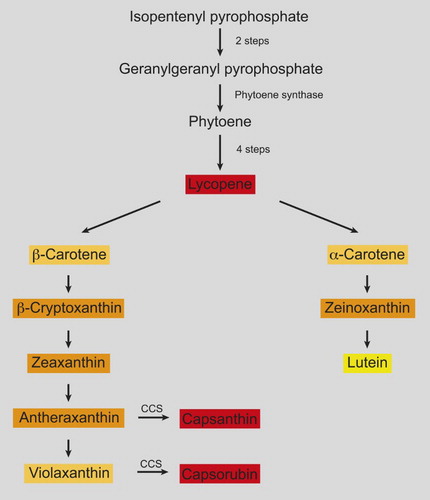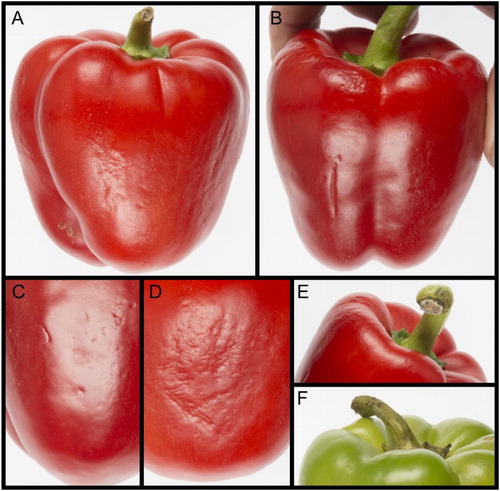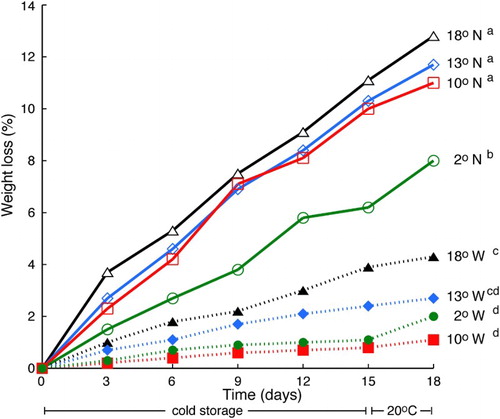Figures & data
Figure 1. Condensed version of the biosynthetic pathway of carotenoids in capsicums and tomatoes. Some steps (such as phytoene to lycopene) require several enzymes. Capsicum spp. possess unique reactions catalysed by capsanthin-capsorubin synthase (CCS). Simplified from schemes in Tanaka et al. (Citation2008) and Gomez-Garcia and Ochoa-Alejo (Citation2013).

Table 1. Key compounds associated with flavour perception in capsicum.
Table 2. Examples of 1-methylcyclopropene (1-MCP) treatment regimes for capsicums.
Figure 2. Chilling injury in capsicums. (A) Pitting on a fruit after storage at 2°C for 3 weeks. (B) Pitting developing into deeper lesions on the shoulder of a fruit after storage at 2°C for 3 weeks followed by 20°C for 3 days. (C) Close-up of dot pitting. (D) Close-up of pitting extending into sheet pitting. (E) Capsicum postharvest acceptability can also be limited by fungal infections of the pedicel, shown here beginning on the cut surface. (F) Necrotic infection spreading throughout the pedicel, which is turning black.

Figure 3. Effect of temperature and plastic packaging on weight loss in ‘California Wonder’ capsicums. Weight loss (as %) of wrapped (W) and non-wrapped (N) fruit was measured over 15 days of storage at the indicated temperature, followed by 3 days (days 15–18) at a shelf life temperature of 20°C. Letters show statistically different separation of groups at P < 0.05 using Duncan’s multiple range test. Figure redrawn from Moline and Hruschka (Citation1977).

